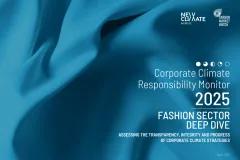Press release from the Climate Action Tracker
If all coal plants in the pipeline were to be built, by 2030, emissions from coal power would be 400% higher than what is consistent with a 2˚C pathway, according to a new analysis released by the Climate Action Tracker (CAT) at the Paris Climate Summit today.
Even with no new construction, in 2030, emissions from coal-fired power generation would still be more than 150% higher than what is consistent with holding warming below 2˚C. Using data from Coal Swarm’s updated Global Coal Plant Tracker, (1) the CAT has calculated the effect on global emissions from coal-fired power, comparing the compatibility of projected coal power production with 2°C and 1.5°C pathways, as well as current policy scenario pathways. There are 2440 planned coal plants around the world (2), totalling 1428GW, which could emit approximately 16-18 percent of the total allowed emissions in 2030 (under a 2˚C-compatible scenario, medium range). Including existing capacity with a technical lifetime beyond 2030, total emissions from coal-fired power generation could reach 12 GtCO2 in 2030. Despite the need to phase out emissions from coal-fired power generation to hold warming to below 2°C above pre-industrial levels, many governments - and the EU28 - are still planning to construct significant amounts of coal power capacity. In many emerging economies, coal capacity is constructed to meet rapidly increasing electricity demand, while in the EU28, new coal plants are mainly to replace existing capacity. The CAT also looked at the eight countries that plan to build more than 5GW of capacity: China, India, Indonesia, Japan, South Africa, South Korea, the Philippines, Turkey – as well as the EU28. (3)
- In seven of the nine countries studied - China, EU28, India, Japan, South Korea, the Philippines, Turkey - planned coal plants threaten the achievement of the INDCs that are only medium or inadequate.
- All of these countries have an INDC rated by the CAT as “inadequate” or “medium” (i.e. not sufficient to keep warming below 2˚C), and have “current policy pathways” that are even less ambitious.
- Their combined planned new coal capacity (2011 new coal plants, totalling 1210GW) could put them in an even worse situation, adding emissions of around 1.5 GtCO2 to the CAT’s projected currently policy levels.
- The estimated emissions impact of planned plants that have been announced and pre-permitted – i.e. not under construction or permitted – would be 3.5GtCO2. Cancelling these plants could lead to emissions reductions of 2GtCO2 below current policy levels, bringing countries closer to their proposed INDC levels.
“There is a solution to this issue of too many coal plants on the books: cancel them,” said Pieter Van Breevoort, of Ecofys. “Renewable energy and stricter pollution standards are making coal plants obsolete around the world, and the earlier a coal plant is taken out of the planning process, the less it will cost.”
Markus Hagemann of NewClimate Institute said the decreasing costs of renewable energy were likely to play a big factor in decisions on future coal plants. “It is unlikely that all of these planned coal plants are going to be built, especially when low carbon alternatives are reaching price parity. If renewables take off as fast as is currently expected, many of these planned coal plants could be stranded investments or would have to operate under difficult financial circumstances.”
Bill Hare, CEO of Climate Analytics, pointed out that in order to stay within the agreed 2 degree warming limit, a rapid decarbonisation of the energy sector was required. “More than 100 countries are calling for the Paris agreement to reference warming limits of 1.5 degrees. Yet even electricity production from existing coal plants far exceed the range of such scenarios. At the same time, we know that emerging economies like India would see so many co-benefits from reducing air pollution and other health issues its people are suffering from.”
Go to Climate Action Tracker








